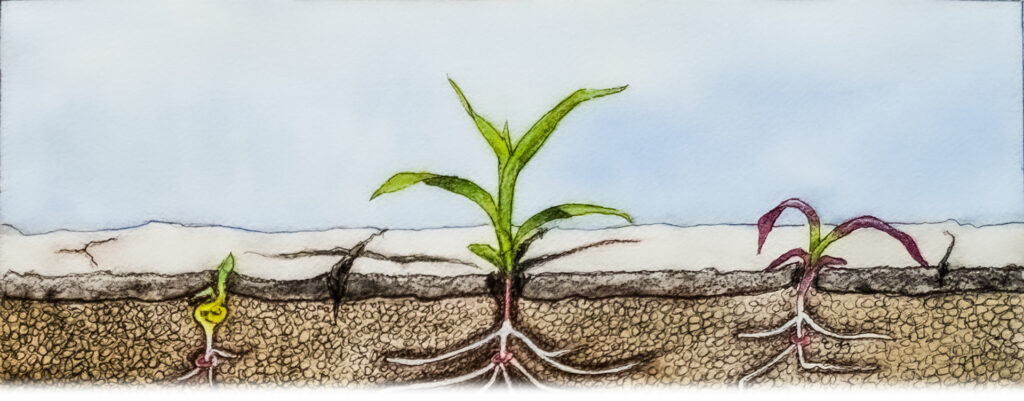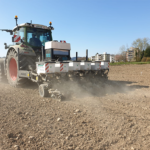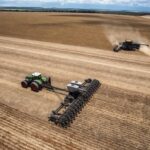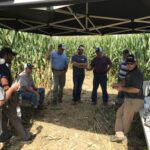A Deep Dive into Soil Compaction
Compaction has many forms and causes. Knowing the types and how to avoid them can help prevent losses in yield and ROI.
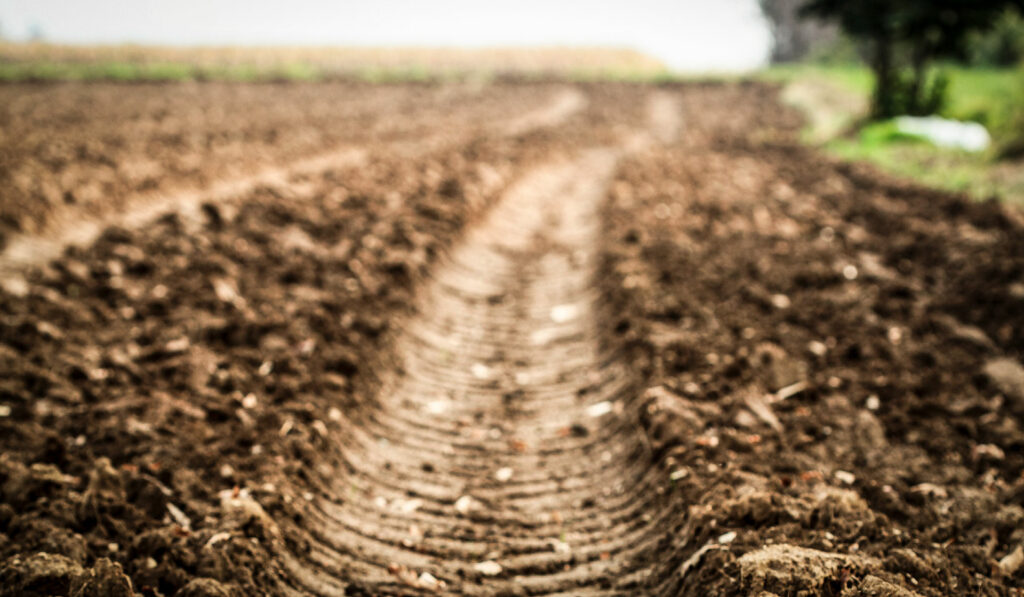
A Deep Dive into Soil Compaction
Compaction has many forms and causes. Knowing the types and how to avoid them can help prevent losses in yield and ROI.Avoiding soil compaction is a challenge, especially when weather and the calendar push growers into tough decisions about when to plant, till or harvest. Working wet soil and other no-no’s come at a price: Experts put average yield losses from compaction at 10 to 20%, even all the way up to 60% in extreme situations.
In fact, soil scientists in North Dakota and Minnesota predict an economic cost of $587 million (yield loss and expense of leveling ruts) through 2021 for every 10% of the corn and soybean acres affected by deep wheel-traffic compaction during the wet 2019 harvest conditions. Actual impacted land area may range up to 30%, resulting in actual costs from compaction up to to $1.76 billion in those two states alone.
What Is Compaction?
In its simplest definition, soil compaction is a form of soil degradation in which soil bulk density increases as the porosity, or space between solid soil particles, decreases when particles are pushed together. Pore space is essential for the movement of air, water, nutrients, soil organisms and plant roots, which is why losing porosity to compaction is such a threat to crop health and yields.
Click here or on the illustration below to see and read about the five main types of soil compaction in farm fields.
Agronomic Impacts of Compaction
Compaction, especially in fine- and medium-textured soils, takes a toll on growing plants. As a physical barrier, it can delay or prevent seedling emergence (crusting), or cause root tips to be club-like or stunted, with few of the fine lateral roots and root hairs needed to take in water and nutrients. Roots may shoot to the sides, looking for a way through the soil, unable to grow past subsoil compaction and left more vulnerable to different stress factors.
And there’s a more direct impact on plant growth, beyond the physical barriers to healthy roots. In what is thought to be a natural survival mechanism, “a root system that’s up against mechanical barriers sends a hormonal signal to the plant shoot, which then slows down respiration and growth.”*
The loss of porosity also cuts down on the soil’s ability to store ample water and allow the gaseous exchange needed to supply oxygen to plant roots and beneficial soil organisms. That contributes to moisture stress and nutrient deficiencies.
If crops have trouble emerging, establishing a robust root system, reaching and taking in nutrients, and even tell themselves to slow down to survive, plant health and yields suffer.
Signs of Compaction
While compaction can reduce crop growth and yield without revealing itself as the cause, there are several visual signs that the condition may be affecting your fields and crops:
- Uneven emergence, especially in wheel track patterns
- Malformed root growth: roots that are flat, stubby, thin, twisted or growing horizontally rather than vertically on one or both sides (hatchet roots)
- Stunted growth or plants showing signs of nutrient deficiencies
- Areas of the field that suffer more from drought stress or disease and insect pressure
- Standing water
- Excessive water erosion
Ways To Avoid Compaction
Soil scientists and agronomists agree on the best way to avoid topsoil compaction at planting or harvest time: Stay out of the field if the soil is too wet to plant without smearing or creating sidewall compaction, or too wet to support the weight of the combine.
When it is time to be in the field, a major way to limit compaction damage is to choose tires with a large footprint, inflated only to the minimum allowable pressures for the weight. Central tire inflation systems, such as the VarioGrip™ tire pressure regulation system on Fendt® row-crop tractors and the Load Logic™ weight management system on the Fendt Momentum™ planter, automate the process of inflating and deflating tires to correct pressures for field and transport. Operators save time while making the right choice for their soil, instead of hurting yields by creating new compaction.
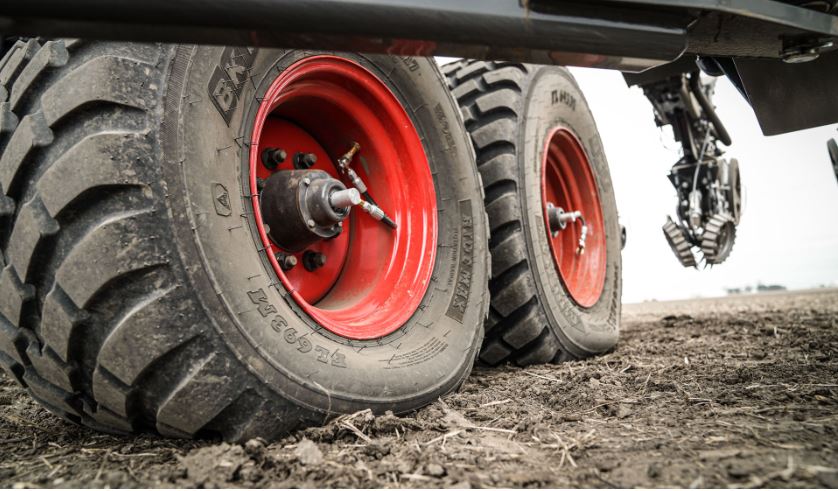
One feature of Load Logic on the Momentum planter is management of tire pressure to ease compaction.
Jason Lee, AGCO agronomist for North America, notes that growers trying to get all their acres planted in windows shortened by weather and soil conditions are drawn to the productivity of high-speed, central-fill planters, but until now may have lost significant yield in the center rows due to wheel compaction from large, heavy commodity tanks.
“With Load Logic on the high-capacity Fendt Momentum planter, growers can benefit from fewer fill stops for seed and fertilizer without paying a penalty from creating more compaction,” he says. “The weight management system not only manages tire pressures, but also gives you the choice of spreading the weight equally across all the planter wheels, or concentrating the weight on the in-line tandem central transport wheels to limit compaction to a controlled traffic path.”
Lee adds that having tire pressure regulation on both the Fendt planter tractor and the Momentum planter “reduces that first-pass compaction and offers growers a complete compaction management systems approach.”
Additional choices soil experts recommend to avoid surface and sidewall compaction at planting time include:
- Leaving some crop residue over the row to reduce crusting
- Planting at an adequate depth (not too shallow) with appropriate downforce and use of seed firmers
- Using controlled traffic lanes to re-use the same wheel tracks
At harvest time, they give similar advice: don’t drive on overly wet fields; use wide tires or tracks; keep trucks out of the field; establish and stay on grain cart paths, ideally same as the combine; don’t till wet soils; use cover crops to help build soil structure while protecting soils from erosion. AGCO’s Fendt IDEAL™ combines offer hydraulic suspended rubber tracks with the largest footprint on every belt size, for maneuverability on any terrain while mitigating compaction.
Tillage Options for Compaction
AUDIO: A range of options exist to improve soil structure, from mechanical tillage to deep-rooted cover crops. In this brief podcast, Larry Kuster, AGCO marketing specialist for seeding and tillage, explains tillage options for breaking up severe, yield-limiting compaction layers at two different depths in the soil profile.
By Marilyn Cummins
* Building Soils for Better Crops, 3rd Edition from the USDA Sustainable Agriculture Research and Education program

